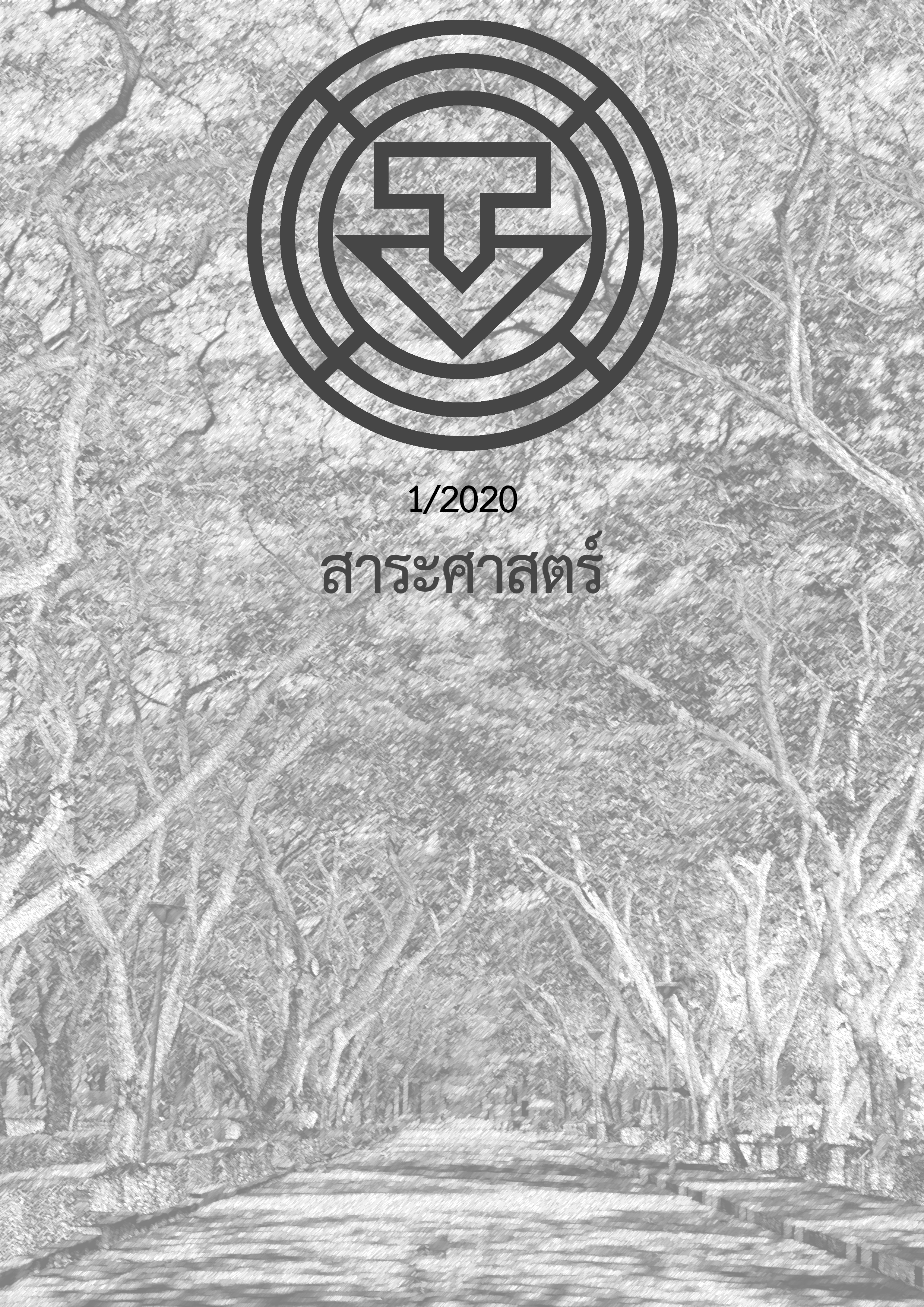Area Using Behavior in Department Store of The Elderly in Bangkok Case Study: Pata Pinklao, Mbk Center, Chamchuri Square and Tesco Lotus Rama 1
Main Article Content
Abstract
This project was aimed to study and analyze the area using behavior of the elderly in department stores which can lead to suitable area management for them in the future. The structured interview method was used to interview the elderly customers while the persons who were responsible for area management in department stores or entrepreneurs were interviewed by the in-depth interview method.
From the study, first, the interviewing had shown that the department store was the second place that elderly people chose to visit. The area using behavior and the purposes of visiting depended on the strength and the selling point of each place. Meanwhile, the location involved the transportation ways they chose. Second, most of the elderly required of the senior zone where they can use it as a rest area for the major reason. While being the socializing area was the second reason so they can quench their loneliness. Therefore, the area management for the elderly should be considered alongside the usage behavior, the customer needs, and the selling point of that place.
Entrepreneurs or private sectors realized the importance of becoming an aging society and the behaviorism of department store area usage in the elderly. Even so, they were not aware or motivated enough to develop their areas. Thus, the government should declare a policy that can raise their awareness and encourage them to establish areas for having adequate and helpful social welfare in society. For example, launching the campaign to ask for cooperation from private sectors, tax deduction and awarding to the department store that has developed a part of their areas for senior citizens so this can entice other department stores to follow the policy. Eventually, the beneficial social welfare in terms of the space providing for the elderly population can be covered by both government and private sectors.
Article Details
References
กรมกิจการผู้สูงอายุ. “สถิติผู้สูงอายุของประเทศไทย 77 ณ วันที่ 31 ธันวาคม 2562.” สืบค้น 19 กุมภาพันธ์ 2563. http://www.dop.go.th/download/knowledge/th1580099938-275_1.pdf.
กระทรวงมหาดไทย. กรมการปกครอง. สำนักบริหารการทะเบียน. “จำนวนประชากรแยกรายอายุ กรุงเทพมหานคร.” สืบค้น 28 สิงหาคม 2562. http://stat.dopa.go.th/stat/statnew/upstat_age_disp.php.
ไตรรัตน์ จารุทัศน์. การออกแบบเพื่อทุกคน (Universal Design). กรุงเทพฯ: หน่วยวิจัยสภาพแวดล้อมที่เหมาะสมกับผู้สูงอายุและคนพิการ คณะสถาปัตยกรรมศาสตร์ จุฬาลงกรณ์มหาวิทยาลัย, 2559.
ไตรรัตน์ จารุทัศน์. โครงการปรับสภาพสิ่งแวดล้อม เพื่อรองรับนักท่องเที่ยวคนพิการ ในระยะที่ 2. กรุงเทพฯ: หน่วยวิจัยสภาพแวดล้อมที่เหมาะสมกับผู้สูงอายุและคนพิการ คณะสถาปัตยกรรมศาสตร์ จุฬาลงกรณ์มหาวิทยาลัย, 2553.
ปฏิพันธุ์ แทนเมือง. “แนวทางการพัฒนาและปรับปรุงด้านกายภาพศูนย์อเนกประสงค์สำหรับผู้สูงอายุ.” วิทยานิพนธ์ปริญญามหาบัณฑิต ภาควิชาเคหการ คณะสถาปัตยกรรมศาสตร์ จุฬาลงกรณ์มหาวิทยาลัย, 2557.
ปราณิดา ศยามานนท์. “สังคมผู้สูงอายุ... โจทย์ใหญ่ที่ธุรกิจค้าปลีกต้องเตรียมรับมือ.” สืบค้น 19 กุมภาพันธ์ 2563. https://www.scbeic.com/th/detail/product/1397.
มหาวิทยาลัยมหิดล. วิทยาลัยการจัดการ. “งานวิจัย AWUSO Society 4.0 แก่แต่วัย หัวใจยังเก๋า.” สืบค้น 18 สิงหาคม 2562. http://www.cmmu.mahidol.ac.th/cmmu/index.php/9-college-news/540-awuso-society-4-0.
สำนักงานสถิติแห่งชาติ. “แถลงข่าว“สถิติบอกอะไร ผู้สูงวัยปัจจุบันและอนาคต.”” สืบค้น 28 สิงหาคม 2562. http://www.nso.go.th/sites/2014/Pages/Press_Release/2561/N10-04-61-1.aspx.
Beard, J.R. and Charles Petitot. “Ageing and Urbanization: Can Cities be Designed to Foster Active Ageing.” Public Health Reviews 32, 2 (2010):427-450.
Cheang, M. “Older Adults’ frequent Visits to a Fast-Food Restaurant: Nonobligatory Social Interaction and the Significance of Play in a “Third Place.” Journal of Aging Studies 16, 3 (2002): 303-321.
Chi Jackie, K.Y. “Projecting Sustainable Living Environment for an Ageing Society: The Case of Hong Kong.” Procedia Environmental Sciences 17 (2013): 675-84.
Ellermeyer, Bill. “Stay Engaged and Healthy (If You Can).” Accessed April 3, 2020.
https://www.emporiapresbyterianmanor.org/9-keys-to-a-happy-retirement3.
Glover, T.D. and Diana C.P. “A Third Place in the Everyday Lives of People Living with Cancer: Functions of Gilda’s Club of Greater Toronto.” Health & Place 15,1 (2009): 97-106.
MHP Salud and National Center for Equitable Care for Elder. Aging in Place: A Resource for Health Centers. North Bethesda, MD.: The Health Resources and Services Administration (HRSA), 2019.
Oldenburg, R. The Great Good Place: Cafés, Coffee Shops, Bookstores, Bars, Hair Salons, and Other Hangouts at the Heart of a Community. New York: Marlowe, 1999.
Ritchie, Hannah and Max Roser. "Urbanization." Accessed February 19, 2020. https://ourworldindata.org/urbanization.
Rosenbaum, M.S., J.C. Sweeney and C. Windhorst. “The Restorative Quality of an Activity-Based, Third
Place Café for Seniors: Restoration, Social Support, and Place Attachment at Mather”s-More-Than-a Café.” Seniors Housing & Care Journal 17, 1 (2009): 75-90.
World Health Organization. “Global Age-Friendly Cities: A Guide.” Accessed December 1, 2019.
https://www.who.int/ageing/publications/Global_age_friendly_cities_Guide_English.pdf.


